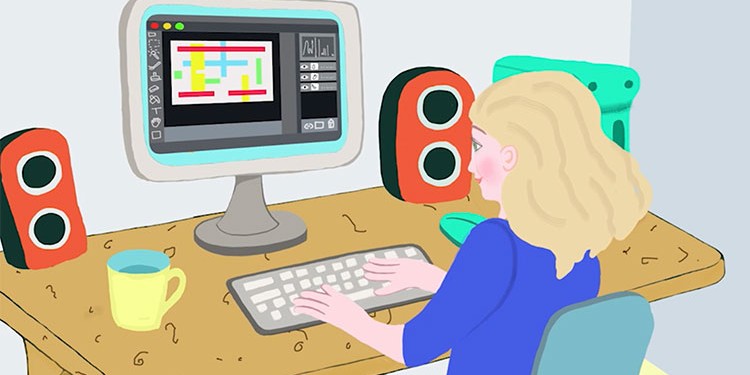Many think of “technology” in a somewhat limited sense. They see it as a series of ones and zeroes, rows of data center infrastructure or a device such as smartphones and laptops. Instead, technology is an enormous engine that is advancing civilization, according to Nikola Bozinovic – founder of Frame and senior vice president and general manager of desktop services for Nutanix.
“If you look at quality of life, life expectancy, and even overall freedom, it’s technology that has been moving us forward for thousands of years,” Bozinovic said during the End User Computing Tech Summit hosted in December 2020 by Nutanix.
“Most of that happened in the last 100 years, and really, most of that happened in the last 10 or 20 years. So it’s clearly accelerating, and technology is something I’m super excited about.”
During the online event, Bozinovic and two other tech leaders discussed the rewards and challenges of end-user computing (EUC), which puts the power of technology directly into users’ hands – wherever they happen to be.
Productivity & Collaboration Benefits
EUC is an umbrella term encompassing technologies such as virtual desktop infrastructure (VDI) and desktop as a service (DaaS), which organizations can use to securely deliver and manage desktops, applications, and data to their users. But when speaking about the term, Bozinovic goes beyond the tech specs to talk about the business benefits. Namely, EUC allows users to consume resources across multiple devices, allowing them to be productive from anywhere – on any machine – while still adhering to the organization’s platform requirements.

“For me, it is a great way to make people more productive – to get more out of individual people and to get more out of teams,” he said.
“It’s a way to deliver what the users need when they need it. It just works. Especially when EUC is executed correctly and executed at scale, I think it can make us all a lot more productive and a lot more collaborative, which are two things that make me really, really excited.”
The Power of Automation
Christian Reilly, former vice president and chief technology officer of the Workspace Services Division at Citrix, noted that EUC solutions can improve the efficiency of IT staffers and end users. “I have a good friend who talks about how the ‘carbon-based unit’ – the human – only has so many atoms of power that they can deliver to any job,” Reilly said. “And then we talk about just how much time people spend on things that don’t add any value yet have to be done as part of the fabric of business.”
By automating many of the steps associated with computing resources delivery, EUC solutions can improve efficiency and free up IT staffers to tackle more innovative projects, Reilly said.
“Many companies have some pretty bad work processes, and some pretty bad technologies that have been layered, upon layer, upon layer,” he said. “Many times, if you bring in a different process, you have to go through hours and hours of reconfiguring, and extracting, and transforming, and all this manual stuff. With EUC, there’s an opportunity to add automation to standardized and repeatable processes and really maximize human capital.”
Securing EUC Environments
As more IT departments run EUC workloads in the public cloud, organizations will need to guard against new security threats, said Shawn Bass, chief technology officer for end-user computing at VMware.
“I don’t think we’ve seen the biggest disruption yet in cloud computing because I think the biggest disruption is going to come when a significant number of assets have been positioned in the public cloud,” Bass said. “And then, the security threat starts to move from datacenter-centric attacks to cloud-centric attacks. Everyone has become pretty comfortable with cloud because of the rate of change and innovation that happens there. Still, I think the security threats that are going to plague cloud computing in the future have only just begun.”
Bass said that many business and IT leaders have grown “comfortable” with the idea that the public cloud is inherently more secure than on-premises environments. Early on, many organizations resisted the public cloud because they thought the opposite was true.
“Whether something is in the cloud or on-prem doesn’t necessarily make it any more or less secure,” Bass noted. “The cloud does often change the operating model, which in some cases leads to better security. But I think we’re going to see a new set of attacks, so it’s going to be an interesting space to watch in the coming years.”
Paving the Path Forward
EUC solutions have proven critical in helping businesses to navigate the COVID-19 pandemic – an event that required organizations across industries to suddenly shift to a remote work model. Looking ahead, Bozinovic said, many organizations are likely to continue to lean on technologies like VDI and DaaS as a large percentage of employees continue to work from their homes at least part of the time.
“The future of work is hybrid,” Bozinovic said. “Some people will work from home. Some will work from the office. Some workloads will be on-prem, some will be in the cloud. So it’s going to be hybrid, ultimately, and organizations are going to adopt whatever works to get the job done – to make people productive on whatever device, on whatever network.”
“The future of work is very much tied to the future of end-user computing,” Bozinovic concluded.
Calvin Hennick is a contributing writer. His work appears in BizTech, Engineering Inc., The Boston Globe Magazine and elsewhere. He is also the author of Once More to the Rodeo: A Memoir. Follow him on Twitter @CalvinHennick.
© 2021 Nutanix, Inc. All rights reserved. For additional legal information, please go here.




